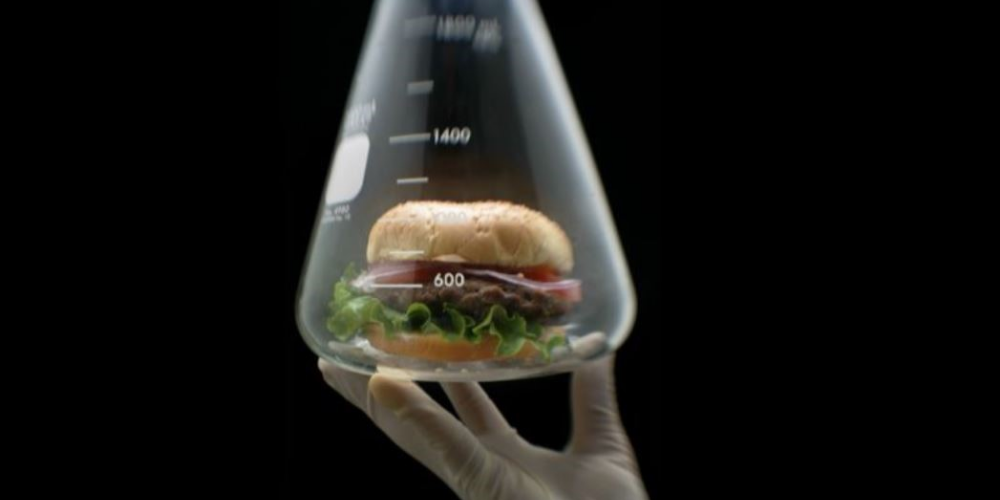Source: Getty Images
FeedBack is a reflections blog authored by the AFI-HQP Grad Scholars on their experiences in the program. Deus Mugabe is an HPQ Scholar working toward a PhD in the Department of Plant Agriculture, OAC. His research is focused on studying the Genomic Analysis of Sclerotinia Stem Rot (caused by Sclerotinia sclerotiorum) Resistance in Canadian Soybean Germplasm.
Just one year ago, I knew very little about cellular agriculture— the ground-breaking technology of artificially making real animal-based food, leather, and other products. The concept sounded so futuristic that I was willing to bet that my generation would not be seeing products from this technology on grocery store shelves during our lifetime. Whenever such conversations came up, most other people seemed to think the same.
After months of academic research on the subject, let’s just say I am glad there was no actual bet. The cellular agriculture industry is new but advancing at a rapid pace. Only eight years ago, a Dutch scientist, Dr. Mark Post, and his research team created the first beef burger in a laboratory that cost CA$330,0001. By the end of 2021, today’s cellular agriculture companies expect the price to fall under CA$10 per lab-grown beef burger1. But before going much further – what is cellular agriculture?
Cellular agriculture is the production of animal-based food products from a cell culture without using the whole animal. For example, instead of raising a cow to maturity to produce meat, cellular agriculture uses science-based techniques to obtain the same products without livestock rearing. To do this, a sample of cells are taken from the animal of interest and placed in a medium that contains essential nutrients like what the animal needs to grow, such as carbohydrates, fats, and minerals. The cells are then placed in a controlled environment that promotes growth, where they can rapidly multiply to produce meat1.
The debates surrounding cellular agriculture:
There are varying opinions surrounding cellular agriculture. On the one hand, there is a strong belief that cellular agriculture will be better for the environment and animal welfare2. In this new model of farming, only a few animals would be kept for cell samples, which could lead to positive environmental changes, such as reductions in greenhouse gas emissions as well as in the number of natural resources (e.g., land and water) used in meat production. The animal welfare factor points at the promise that animals would not need to be slaughtered to produce meat products and that such a significantly reduced population would lead to improved care. Global food security is another important factor supporting cellular agriculture— feeding the increasing demand for meat and other animal products of a rapidly growing human population will require more efficient and sustainable technologies. Advocates also highlight public health, public safety, and nutrition as other pros to this technology. It is argued that the production of cellular-based foods in sterile and controlled conditions would facilitate control of diseases transmitted to humans from animals— making them safer to consume2. Nutritionally, cellular technology precisely tunes nutritional content as desired, for example, meat with less saturated fat or milk without lactose3.
Conversely, others are concerned about the negative impacts on conventional animal agriculture and livelihoods. Cellular technology could ignite big corporation monopoly on animal products and drive many small and medium-scale independent farmers out of work. Animal farming supports over one billion livelihoods worldwide4— and, more than just a profession, it is ingrained within many cultural traditions. There are also questions about creating a further disconnect between people and the food they eat, and whether cellular-based foods will replicate the natural experience in terms of quality, taste, health, safety, and more. Others criticize the environmental sustainability claims. For example, some reports indicate that cultured meat could have greater global warming potential than poultry or pork production5, in addition to other environmental implications such as factory waste that have not yet been fully unveiled.
Is there a place for both Cellular and conventional agriculture in Canadian agri-food?
Due to its recent emergence, there is a significant knowledge gap in understanding the drivers of and barriers to cellular agriculture adoption in Canada. This is where we, a multidisciplinary team of graduate students at the University of Guelph, became involved with a research project to fill the gap. The project was funded through the Food from Thought and Ontario Agri-Food Innovation Alliance’s HQP scholarship program, and it was conducted in partnership with Cellular Agriculture Canada – a non-for-profit organization dedicated to supporting the emerging field of cellular agriculture in Canada, and Future Fields – an Alberta-based start-up that focuses on growth media solutions for the cellular agriculture industry. Our objective was to study potential pathways for cellular agriculture adoption in Canada and to design a potential business model that integrates cellular and conventional agriculture while minimizing disruptions. To address the challenge, we had discussions with experts in the cellular agriculture industry from around the world. We focused on the meat industry and conducted surveys across the value chain from livestock farmers, meat processors, retailers, and consumers to learn about the drivers of and barriers facing cellular agriculture. These surveys were conducted across Canada. Our team has compiled a report detailing our study, with plans to communicate major findings and conclusions publicly through various media. We hope that our research will motivate knowledge transfer and transparency in the cellular agriculture industry to the general public, while also informing recommendations to foster collaboration between Canadian private and public stakeholders to create sustainable food systems in a way that minimizes disruptions.
Navigating a research project on a new topic that draws strong opinions during a pandemic has been an eventful journey. However, the experience has also proven to be a great opportunity for building resilience while honing important technical and soft skills. Understanding the problem required building knowledge beyond our primary research scope and opened us to a whole new world of complexities in agri-food systems— and reminded us that, although science is important, it is just one of many tools in the box to address real-world problems. In addition to the opportunity to contribute research to an emerging field, this project has helped us develop important transferrable skills. Working closely with industry partners and different stakeholders in the private and public sectors provided us with experience in collaboration, communication, and public speaking. We also refined our creativity, critical thinking, and teamwork skills by bringing together our diverse backgrounds and experiences to solve the many challenges presented to us over the course of the project. The polarizing elements of the study underlined the importance of committing to unbiased truth in our role as scientists, and transparently communicating results in a way that allows the public, farmers, and other stakeholders to make their own decisions.
References
- Khan, A. (2020). An introduction to cellular agriculture. Cell Agri, Toronto.
- Stephens, N., & Ellis, M. (2020). Cellular agriculture in the UK: a review. Welcome open research, 5.
- New Harvest. (no date). Retrieved from https://new-harvest.org/what-is-cellular-agriculture/.
- (2009). Global Livestock Production Systems. http://www.fao.org/3/i2414e/i2414e.pdf
- Smetana, S., Mathys, A., Knoch, A., & Heinz, V. (2015). Meat alternatives: life cycle assessment of most known meat substitutes. The International Journal of Life Cycle Assessment, 20(9), 1254-1267.


